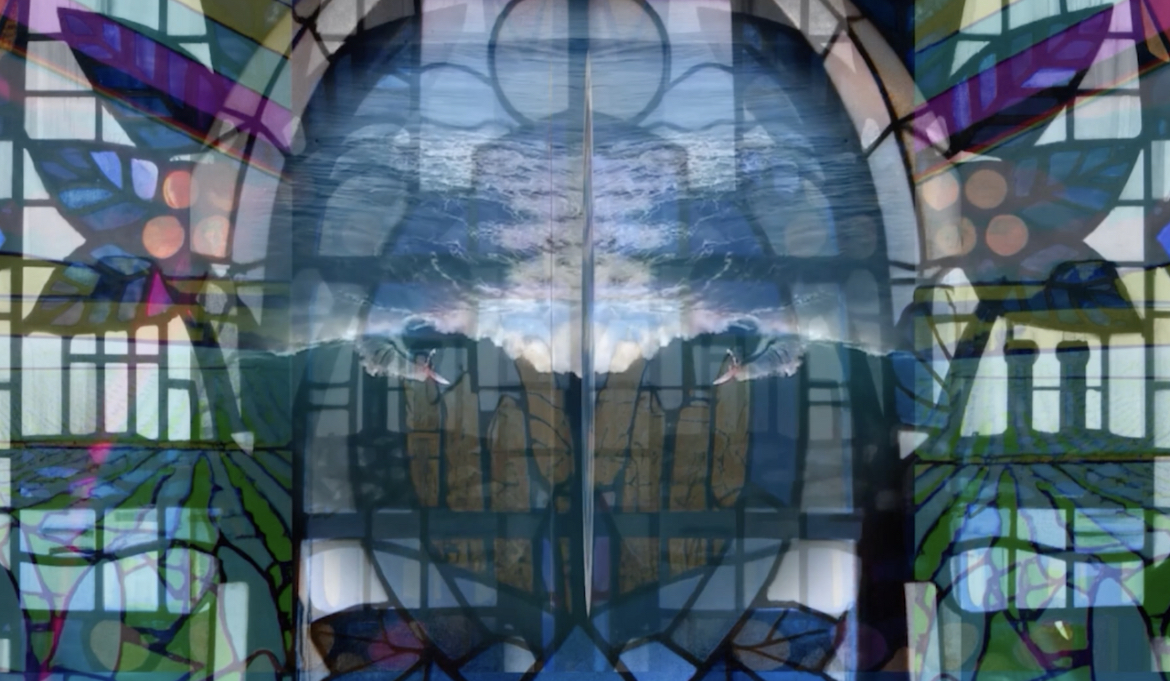Slippage is an inquiry into the perception of time. The work was constructed out of six elements, each consisting of a video monitor with built-in speaker and a VHS deck. The monitors are placed on their side in a circle. Each of the units plays the same tape. The tapes’ visuals consist of black & white footage of road markations as seen from a driving car at night. The white road markations on black tarmac move horizontally around the circle of monitors in a mesmerizing fashion.
The accompanying audio track is based on the refrain of the Steve Miller Band’s 1976 hit Fly Like an Eagle. The lyrics of this song contain the line “time keeps on slipping, slipping, slipping into the future”. In Slippage, the soundtrack of the videotapes consists of a continually repeated, simple harmonic based on the melody that underlies the above-mentioned lyric section. This ‘tune’ is being played in an amateurish manner on a 70s home organ.
The monitors are arranged to reference the face of a clock. Due to the organ sound and its continually slipping imagery the installation also evokes a children’s carousel.
The cognitive process by which we experience time’s passage is based on understanding one moment to be different from a previous one. A musical beat, the ticking of a clock, the change between day and night, or any other regular binary occurrence is capable of letting us experience the change between two alternate states. These repetitive phenomena allow us to quantify time’s passage. Eternity thus can be described a single unchanging moment.
The work looks at the dichotomy of sameness and change, time’s passage and stasis, through the formal tool of repetition and sampling. While the work explores broader ideas about time, it references a relatively narrow time frame, that of the mid 1960s to the mid 1970s.
A further motivating principle for the work is the interplay of the timeless vs. the time-specific, i.e. the ‘classic’ vs. the ‘fashionable’, and the ‘profound’ vs. the ‘banal’.
Based on minimalist musicians Terry Riley and Steve Reich’s early works, the soundscape of Slippage is created by taking advantage of the deficiencies of contemporary electronic equipment. Each of the six VHS decks in the installation plays back at a speed that varies very slightly from the next.
The soundtracks of the various units that make up the work consequently fall out of synch and what ensues is a soundscape in the style of early minimalist composition. This type of soundscape, despite its identical and continually repeated basic phrase, is ever-changing. Because the soundtracks of each unit shift slightly against each other, the repeated sequence of notes creates continually changing rhythmical and melodic patterns.
The original song Fly Like an Eagle reveals the period in which it was produced clearly through the distinct sound of a Hammond-type organ. While this song, with its exceedingly banal lyrics, was a relatively big hit in the 1970s, the Steve Miller Band did not achieve a ‘place in history’. Still in existence, the band now tours second rate venues in smaller cities across North America.
Minimal Music on the other hand, alongside serial music and compositional innovations inspired by John Cage, presents one of the pivotal developments in Western ‘classical’ music during the second half of this century. In Philip Glass’ words, Minimal Music requires a way of listening that lacks the “traditional concepts of recollection and anticipation.”










